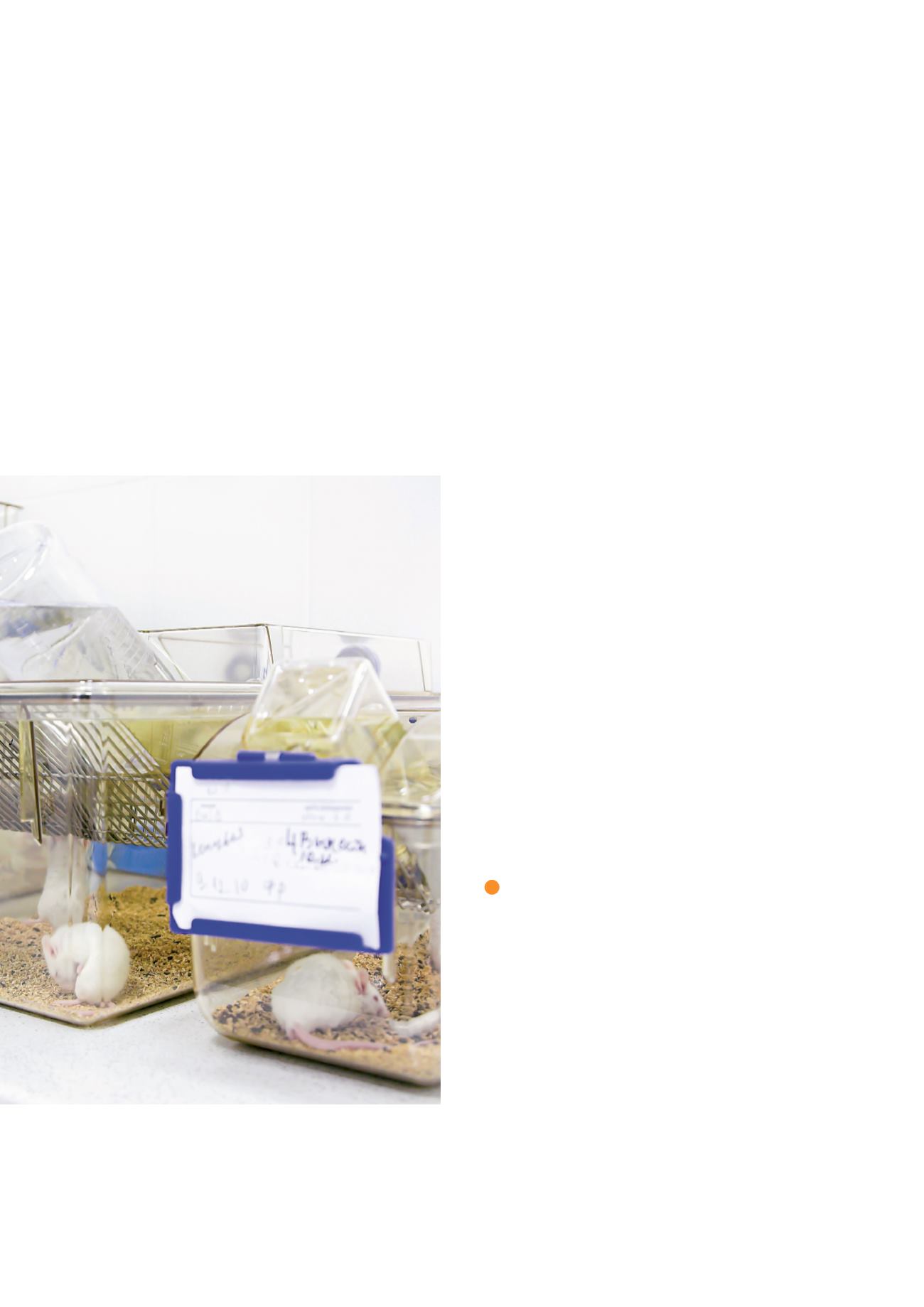
81
Mice are the most frequently genetically altered species
of laboratory animals. However, as traditional prey ani-
mals, they exhibit very few directly observable signs of
pain or suffering – if they do, it is only when they are sub-
jected to a high level of suffering. It is for this reason that
scientists and competent authorities require useful crite-
ria for the detection and assessment of pain and for the
creation of suitable counter-measures. Signs of general
stress, such as a change in fertility or increased mortality,
as well as indicators of each particular genetic alteration,
such as tumour frequency or muscle alterations, must be
taken into account.
For the practical implementation of the new animal welfare
guidelines, the BfR held a workshop in June 2013 on clas-
sifying pain and suffering in genetically altered laboratory
animals. Various research institutions and competent au-
thorities for animal testing projects from the German fed-
eral states took part in the workshop. The workshop dealt
with signs of general pain and suffering which can be
applied for all breeds of mice. The participants compared
what they considered to be the most sensible approaches
based on their own experiences with suggestions pub-
lished by the EU Commission in January 2013.
The workshop's recommendations first explain the cases
in which pain assessment is necessary. Particular empha-
sis is placed on the importance of cooperation between
animal care personnel, scientists and animal welfare of-
ficers to correctly identify pain and suffering and to take
measures to reduce or avoid it as quickly as possible. It
is also recommended that for the assessment of pain and
suffering no further animals are bred and that they are
not subjected to additional pain. This means that blood
samples, for example, should only be taken from animals
whose blood count is likely to change. Furthermore, for
the classification of pain and suffering, the minimum num-
ber of animals, the most important time points during the
life cycle and the key criteria (e. g. litter size, occurrences
of developmental disorders) were described and record-
ed in form drafts. If signs of pain and suffering are ob-
served, or when a particular type of pain is possible due
to the nature of the genetic alteration, both additional time
points as well as specific examinations must be defined
and documented by the responsible scientific personnel.
These recommendations are helpful for scientists and
competent authorities in the assessment of mouse breeds
with genetic alterations and are the basis for nationwide
standardised administrative procedures. Additional work-
shops will further develop and improve the criteria.
Mice and rats are the most frequently used genetically
altered animals in experiments. Both scientists and com-
petent authorities need useful criteria for these animals,
both in terms of assessing the burden imposed on them
and to stipulate suitable measures to mitigate the suffering
of the animals.
<
Alternatives to Animal Experiments


